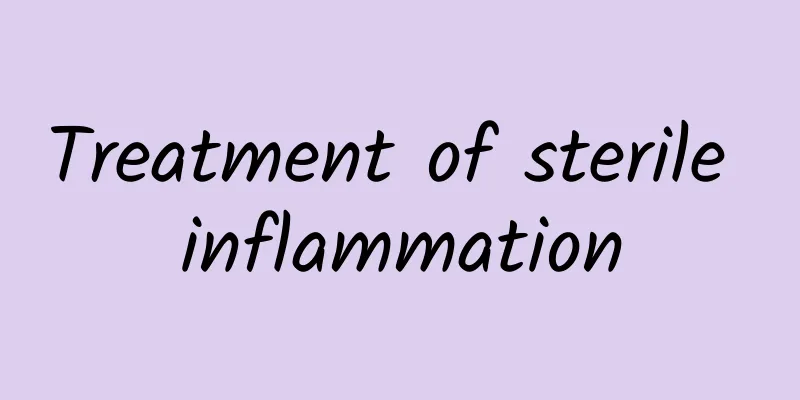How to treat acute laryngitis

|
Acute laryngitis is a common disease. The pain sites of acute laryngitis and acute tonsillitis are basically similar, both of which cause sore throat. An obvious difference between acute laryngitis and acute tonsillitis is that acute laryngitis can cause hoarseness at the same time as sore throat. Acute laryngitis can occur in all seasons of the year and can occur in all age groups. It can affect the patient's eating and speaking. Acute laryngitis and acute tonsillitis are generally referred to as sore throats by the general public. We should carefully distinguish them based on the symptoms. The treatment methods for acute laryngitis and acute tonsillitis are completely different. Acute laryngitis is mainly based on detoxification and opening the voice. The specific treatment methods for acute laryngitis are introduced as follows: The most important treatment for acute laryngitis is vocal cord rest and avoid shouting loudly; use antibiotics and steroid hormones, such as 8 million units of penicillin and 5-10 mg of dexamethasone added to 5% glucose solution for intravenous drip, or 5.0 g of cefotaxime and 100-200 mg of hydrocortisone for intravenous drip. If ultrasonic nebulization inhalation is used to treat this disease at the same time, the effect will be better and faster. 80,000 units of gentamicin and 2 mg of dexamethasone can be added to 20-50 ml of normal saline and inhaled by nebulization once a day to quickly improve hoarseness symptoms and shorten the course of the disease. TCM treatment: TCM believes that "acute laryngitis" belongs to the category of "acute laryngeal aphonia" in TCM, and its pathogenesis is: (1) Wind-cold attacks the throat, causing the lungs to lose their ability to clear and purify; (2) Wind-cold attacking the throat: rapid onset, with sudden loss of voice or hoarseness, slight pain and discomfort in the throat, cough, pale red and slightly swollen vocal cords, accompanied by fever, chills, nasal congestion and clear runny nose; pale red tongue with a thin white coating, and a floating and tight pulse. The treatment should be to dispel wind and cold, open up the lungs and relieve the voice. (3) Wind-heat attacking the throat: hoarseness or aphonia, burning, dry and painful throat, hoarseness aggravated by fever or cough, swollen glottis, red vocal cords accompanied by fever and chills, cough with thick yellow sputum; red tip of tongue, thin yellow fur, and rapid and floating pulse. The treatment should be to dispel wind and heat, promote lung function and relieve voice. Traditional Chinese medicine emphasizes treatment based on syndrome differentiation, which is difficult for ordinary patients to distinguish. If you want to use traditional Chinese medicine to treat laryngitis, you need to see a traditional Chinese medicine doctor and don't take medicine blindly. You can take some watermelon frost lozenges or coral grass lozenges on your own, and you can also use some dietary therapy prescriptions to assist. You can eat more light foods such as white radish, carrots, and green leafy vegetables at each meal. |
Recommend
What are the traditional Chinese medicines for hair growth?
Due to the increasing pressure of life, hair loss...
How to treat nighttime bruxism
Many friends will suffer from nocturnal teeth gri...
Introduction to Chinese Herbal Medicine Polygonatum
There are many types of Chinese herbal medicines....
What to do if prolactin is high during pregnancy
Many people always encounter some unnecessary tro...
Do you know what causes excessive sweating?
Everyone will experience sweating, because when t...
Can I eat sesame seeds during menstruation?
Menstruation visits women every month. Although i...
Why is my left ankle swollen?
We often encounter such situations in life: some ...
Benefits of abdominal muscles for sexual function
Many men hope to have nice abdominal muscles, bec...
There is a lump on the buttocks that does not hurt or itch
Generally, people will only check their health wh...
Can rabies kill you?
Rabies has always been a great threat to life. Ma...
What should I do if my baby’s tongue is short?
Many people may not have heard of tongue tie and ...
Introduction to ocular sweat duct tumor
Regarding the disease of ocular syringoma, many f...
What are the side effects of Budd-Chiari syndrome?
People's bodies are easily troubled by a vari...
What to do if your feet itch
Itchy feet are a very common phenomenon, especial...
Can a corneal perforation heal on its own?
Corneal perforation is often caused by corneal tr...









